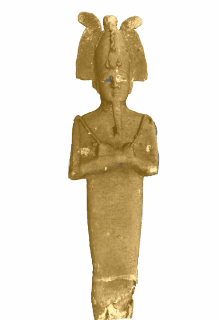Apr 3 2015
A research team from the Egyptian Museum of Florence examined three antique bronze figurines non-invasively with neutrons at the Helmholtz-Zentrum Berlin für Materialien und Energie. The statuettes embody Osiris, the Egyptian god of the afterlife, the underworld and the dead.

Until now, little had been known about what alloy they consist of or how they were produced. Using several analytical methods, the researchers have now shown that the production method and the materials used were astonishingly similar for all three figurines, even though they were crafted in different regions of ancient Egypt.
Historical artefacts are of inestimable value to research because they reveal a great deal about the life and culture of ancient civilizations. Yet in their concern to preserve the objects, scientists cannot always risk taking material samples. Now, for the first time, the research team from the Egyptian Museum of Florence has combined several non-invasive methods for determining how the Osiris figurines were crafted. They employed neutron tomography at the Helmholtz-Zentrum Berlin, time-of-flight neutron diffraction at the neutron source ISIS (UK) and laser-induced plasma spectroscopy. These methods yielded different, complementary information about the bronze Osiris figurines.
“Neutrons are highly suitable for studying metallic materials. They can penetrate deep into the objects. On our instrument CONRAD at the neutron source BER II, we were able to produce three-dimensional images of inside each Osiris figurine,” says Dr. Nikolay Kardjilov, co-author of the paper and responsible scientist for the neutron tomography instrument at the HZB.
The researchers from the Egyptian Museum of Florence conducted this work to learn how the figurines were produced, what materials they consist of and why they were in different states of preservation. The analyses showed that all three figurines consist of a similar clay core and that the ancient craftspeople had each used a very similar method to produce the casting moulds for the bronze statuettes. The figurines were also made from metal alloys very similar in composition. This result surprised the scientists, because the figurines appear to have been be made in different regions of Egypt.
The Egyptian Museum of Florence has been in possession of the bronze Osiris figurines since the 19th century. The first figurine was brought to Italy from the Schiaparelli archaeological expedition at the end of the 19th century; the other two figurines were donated to the museum by a noble family in 1848 and 1868. The figurine from the Schiaparelli expedition was the largest (height: 37 centimetres, weight: 1400 grams). The other two figurines were substantially smaller (height: 19 centimetres, 230 grams and 18 centimetres, 300 grams). The exact origins and ages of the figurines remain unknown.